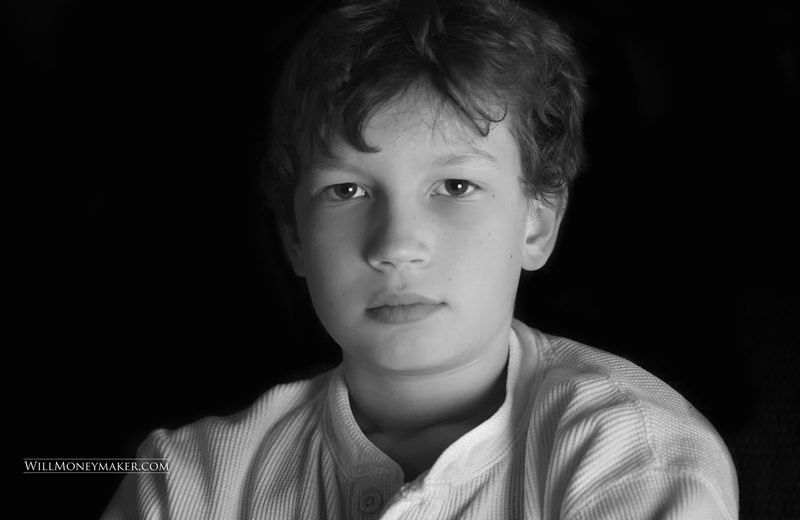I produced a series a while back about teaching children the fundamentals of photography – which is a great thing to do, provided that the child in question has an interest in the photographic arts. But what if your child is not particularly interested in photography or art in general? What then?
Well, it may be that photography just isn't for him or her. Or, it may be that the child hasn't had an opportunity to become interested. Interest and engagement come with exposure and with fun, kid-friendly activities centered around photography. To that end, I've created a list of suggestions that may help you build your child's interest in photography. Try some of these things with the potential photographers in your life and see what develops. Who knows! Maybe what starts as a fun thing to do on a Saturday afternoon will turn into a lifelong passion – or even a career, someday!
1. Teaching Children Art History
Most photographers have a historic muse of some kind, be it Ansel Adams, Stieglitz, Cartier-Bresson or one of hundreds of other famous photographers. In fact, most of us take inspiration from many different photographers, not just one. This is why a foundation in art history is essential for a budding artist – so that the child has a source of inspiration and ideas to work from.
The problem is, almost no kid will want to sit through lengthy dissertations about historic photographers, nor will they want to read tomes and textbooks about art history. So what are you to do? The best suggestion is to simply have art around. Make the work of others easily accessible. Kids are naturally curious, so if it is there for them to look at, they are likely to do so.
And how do you make art accessible? Trips to the art museum are one way, and so are framed pieces of art hanging on the walls. However, framed art tends to fade into the background in the home, especially when the TV is on and there are toys to play with – and not all children will appreciate spending the day at a museum, not if they find such things boring. So, my best recommendation is the good old coffee table book. Have a few books of artwork laying around and you may just find your children paging through them on quiet Saturday mornings. You can select the works of specific artists if you know what your child might be interested in or there are a few compendiums out there that feature a handful of works from many different artists to give your children a broad sampling of artistic styles.
2. Photographing the Familiar
Once your child has a camera in hand, what is he or she going to photograph? At first, most children won't want to create complex still life images or spend hours examining scenes, looking for art within those scenes. They'll be naturally drawn to – and more comfortable with – the things that mean the most to them. Encourage children to start with subjects like pets, siblings, parents, grandparents, their friends, their favorite toys and so on. In fact, you may even suggest that your child create scenes with their favorite toys, posing action figures and dolls – an exercise to get the child thinking about composition, even if you haven't yet fully explored or taught compositional rules. Let children photograph what they want to keep them interested in creating art.
3. Set Up a Photographic Safari
If you can turn photography into a game, then you'll find that this is one of the best ways to capture a child's interest and hold it. There are lots of ways that you can accomplish this. For instance, if your child likes to explore, then go on a photographic safari in which the kids explore the backyard, the neighborhood or your favorite park, taking pictures of all the interesting things that catch their eye.
You could also turn photography into a game of “I Spy.” If you spy something red, then the kids have a certain amount of time to take photographs of red objects. Or, go on a scavenger hunt, except instead of collecting a list of items, the kids are collecting photographs of a list of items. Whatever game you decide to play, come up with some fun goals for the kids to complete as they trek around the backyard or wherever you are playing your photographic game.
4. Have a Show-and-Tell
Taking the photographs is only half of the fun. Once the photographs have been created, get them printed so that your child has a record of the things he or she has created. Then, when the opportunity presents itself – maybe after dinner on a weeknight – turn off the TV and sit down with the prints for a little show-and-tell session. Ask your kids to tell stories about some of the images or talk about why he or she took some of the images.
The objective here is to get children thinking about the images they've made. With something like show-and-tell, kids have a chance to show off creations that they are proud of. More than that, they are asked to put it all into words – why they took the images, how they took the images and what those images mean to them. This is a fantastic way to get children thinking both critically and creatively about their own artwork.
The beauty of childhood is that it is all about learning, growing and trying new things. Perhaps your children will go on to photographic careers or a lifelong interest in the art as a hobby – or, maybe they won't! Maybe photography will be a passing thing that you do together as a family for a summer before moving on to other new things to explore. But, until you put a camera in a child's hands and let him or her try it, you'll never know!





